A show you don’t want to miss if you’re in Berlin before the end of April. Just make sure you avoid weekend afternoons or it’s Long Queue party for you!
At first glance Walton Ford’s animal watercolour paintings look like harmless illustrations made by French and British colonial-era illustrators. Until you look closer and realize how cruel the world depicted is.
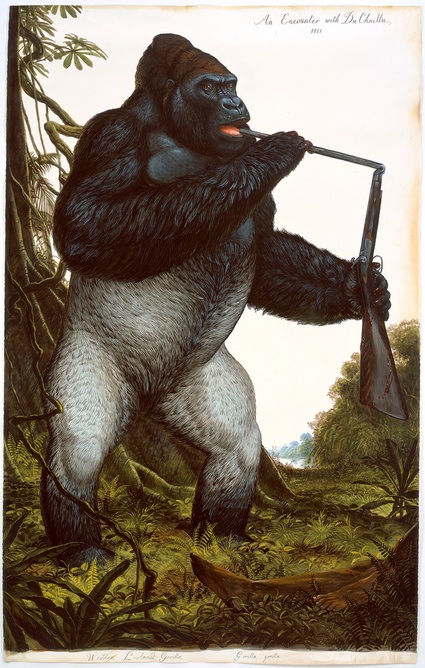 Walton Ford, An Encounter with Du Chaillu, 2009. © Walton Ford
Walton Ford, An Encounter with Du Chaillu, 2009. © Walton Ford
A beautiful panther has escaped from the zoo and villagers are trying to kill it, an Orangutan is serenely strangling a parrot, a gorilla commits suicide using the gun of a hunter it has just killed, a (now extinct) elephant bird of Madagascar stands distressingly on one leg as the other is impeded by the rope that a hunter has tied around its body and beak. It’s animal kingdom at its fiercest. You almost wish you didn’t have to witness any of those scenes but then the images are so beautiful, you proceed to the next one.
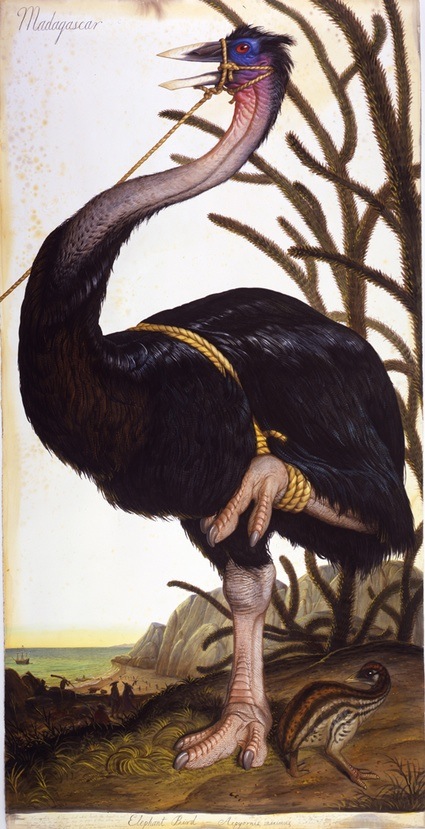 Walton Ford, Madagascar, 2002. Courtesy of Paul Kasmin Gallery
Walton Ford, Madagascar, 2002. Courtesy of Paul Kasmin Gallery
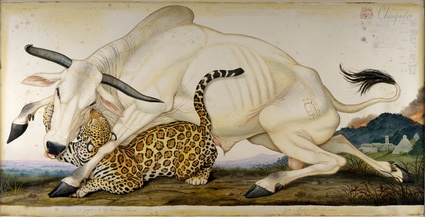 Walton Ford, Chingado, 1998. © Walton Ford, Courtesy Paul Kasmin Gallery
Walton Ford, Chingado, 1998. © Walton Ford, Courtesy Paul Kasmin Gallery
The lions, birds, wolves, primates and other ‘wildlife’ animals never come on their own. They are accompanied by symbols, allusions and clues alluding to texts from colonial literature, folktales, travel guides or even classics from American literature. In Ford’s watercolours, natural history meets political commentary in an erudite and visually spectacular way. The images satirize colonialism, politics, slavery, natural science, and man’s impact on nature.
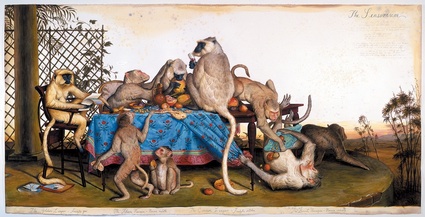 Walton Ford, The Sensorium, 2003. © Walton Ford
Walton Ford, The Sensorium, 2003. © Walton Ford
“There is so much science and popular interest regarding animals – like the Animal Planet shows and field research,” Ford told The Local. “But that’s of no interest to me. I don’t care how gorillas behave in nature, but how people could come up with something like King Kong – how they could develop that kind of fear and terror, and we could come to accept him as an icon of nature.”
Ford’s images are accompanied by a brief text which sometimes reveal the meaning or story behind the painting and sometimes only deepens its mystery. Example:
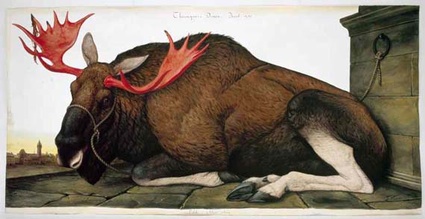 Walton Ford, Thurneysser’s Demon, 2008. Courtesy the artist and Paul Kasmin Gallery
Walton Ford, Thurneysser’s Demon, 2008. Courtesy the artist and Paul Kasmin Gallery
Thurneysser presented also to Basel, his native city, a large elk, which had been given to him by Prince Radziwil; but the good Baselers looed upon the strange animal as a most dangerous demon, and a pious old woman finally rid the town of the dreaded beast by feeding it with an apple stuck full of broken needles. The Criminal Prosecution and Capital Punishment of Animals by E.P. Evans, 1906.
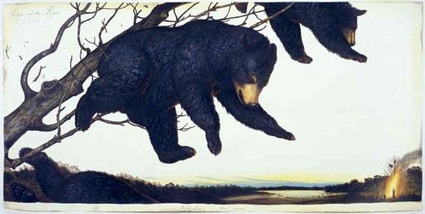 Walton Ford, Scipio and the Bear, 2007. Courtesy the artist and Paul Kasmin Gallery
Walton Ford, Scipio and the Bear, 2007. Courtesy the artist and Paul Kasmin Gallery
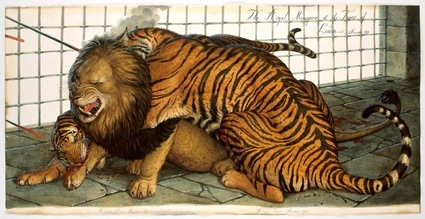 Walton Ford, Royal Menagerie at the Tower of London – 3 December 1830, 2009. © Walton Ford
Walton Ford, Royal Menagerie at the Tower of London – 3 December 1830, 2009. © Walton Ford
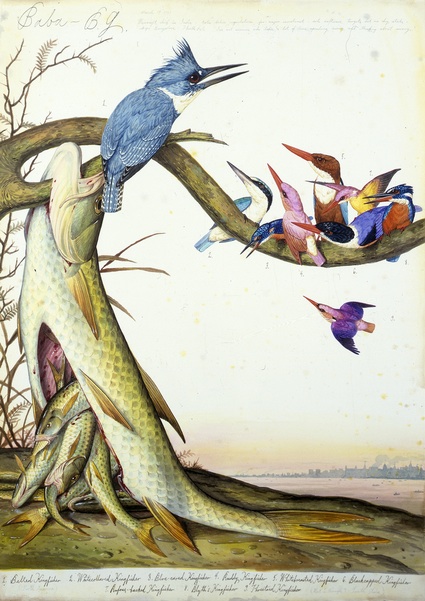 Walton Ford, Baba – B.G., 1997. © Walton Ford, Courtesy Paul Kasmin Gallery
Walton Ford, Baba – B.G., 1997. © Walton Ford, Courtesy Paul Kasmin Gallery
Ford is fairly popular and well-known in the United States but less so in Europe. Walton Ford – Bestiarium which opened recently at the Hamburger Bahnhof in Berlin is his first solo exhibition in Europe.
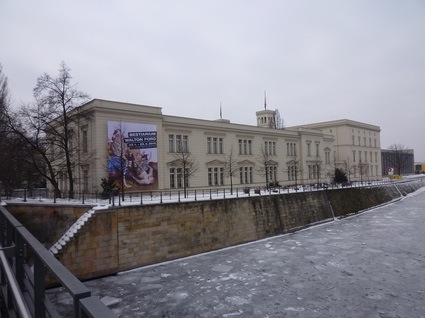
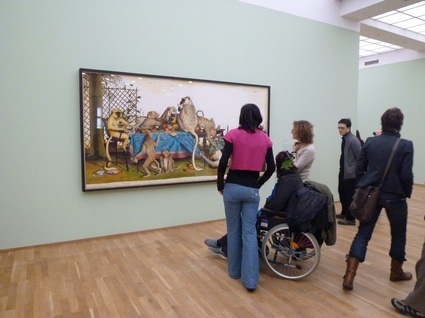
All my pictures.
Whitehot Magazine has an interview with Walton Ford. Video portrait of the artist.
Walton Ford – Bestiarium runs until April 24, 2010 at the Nationalgalerie im Hamburger Bahnhof – Museum für Gegenwart, Berlin.
